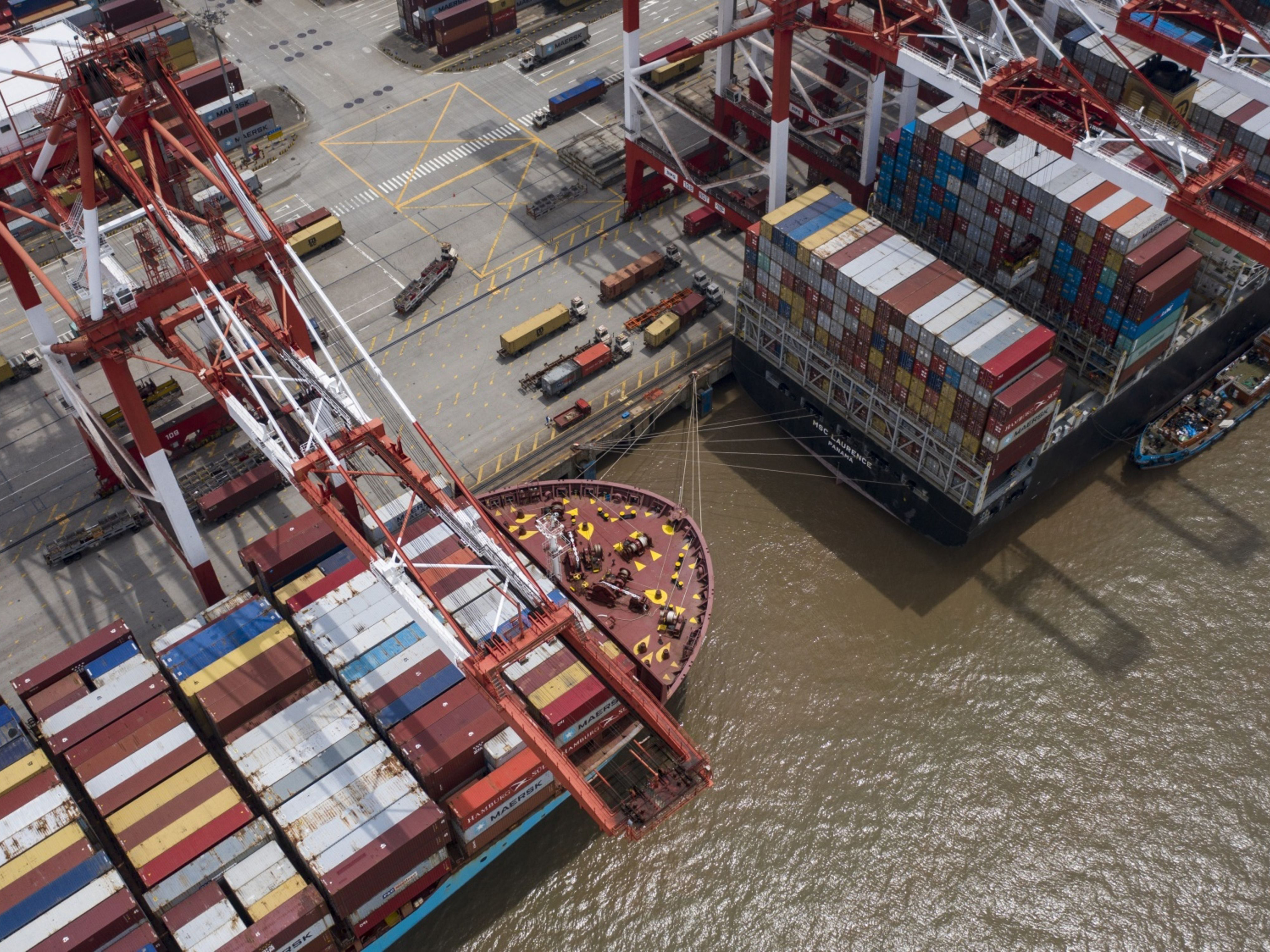
Numbers from the first quarter of this year show that the U.S. economy is “back in business.” But can it keep up the momentum?
The good news comes from the latest Index of Globe Trade from Tradeshift, a B2B supply chain payments platform. The first quarter of 2021 was “the first time we saw global growth on par with pre-pandemic levels,” says chief executive officer Christian Lanng.
The U.S. economy was the prime factor behind global growth during that period, chalking up a 10.5% rise in trade activity. Parts of Northern Europe trailed well behind, with China “flattening out” after a sizzling performance in the second half of last year, Lanng notes.
Vibrant consumer demand in the U.S. was a major driver of economic growth in the first quarter, and Lanng “absolutely” expects that trend to continue in the second quarter. With the world struggling to emerge from the COVID-19 pandemic, he ascribes the positive results in part to relatively high vaccination rates in the U.S. and major economies. “It’s pretty clear that there was a direct correlation to accelerating trade,” he says.
The picture is marred, however, by serious supply issues. Nearly one in five suppliers said they were struggling to keep pace with demand. While manufacturing orders shot up 80% in March year-over-year, invoices were up just 20%. The resulting lack of cash flow was keeping suppliers from ramping up production and filling orders, Tradeshift reports.
Meanwhile, the global trade landscape was dotted by “zombie companies,” those relying on government stimulus funds for their continued existence. That’s money that would have been better used as working capital by companies with an actual chance to survive, Lanng says.
Additional obstacles to meeting the current surge in demand include a severe shortage of semiconductors, the blockage of the Suez Canal by the Evergreen Line containership Ever Given, and heavy congestion at key ports, especially in Southern California. An estimated 4.5 million cars won’t be delivered in the months ahead due to a lack of semiconductors to power internal systems, Lanng says.
Don’t expect a recovering global trade system to return to the model that prevailed before COVID-19 hit. Analysts blame many of the recent supply shortages on the popular just-in-time theory of minimizing inventory levels in order to keep costs low. Declares Lanng: “The whole idea of a JIT supply chain is stone dead.”
The shift is toward a “just-in-case” model with higher reserves of safety stock, and a few companies saw it coming well before the pandemic arrived. Toyota, which pioneered the notion of JIT and “Lean” manufacturing supply chains, began stockpiling semiconductors 10 years ago, Lanng says. That’s why it’s the one major automaker that has enough supply on hand now.
Stocking strategies calculated to cut costs have ended up having the opposite effect. The U.K. has spent around £20 billion on personal protective equipment and hospital supplies to deal with COVID-19 over the past 18 months, according to Lanng. Had it stockpiled those items prior to the pandemic, the price would have been closer to £2 billion pounds. “They just wiped out 10 to 15 years of savings in one year by running JIT,” he says.
The end of government stimulus programs, both for businesses and individuals, is likely to create some speed bumps on the road to recovery. A rash of bankruptcies, especially in the small to midsized range, is a possible consequence. But Lanng expects the workers cut loose by those failures to be immediately absorbed by surviving companies, many of which are struggling to fill open positions. The outcome rests in large part on how quickly the unemployed and under-employed return to the workforce.
Yet another possible outcome of the post-pandemic era is a shift in the balance of power between buyers and suppliers. In recent years, and especially during the pandemic, the latter have been forced to accept lengthier payment terms, placing many at peril. But it takes time for major suppliers to ramp up production when the economy heats up, and “suddenly the supplier side is holding the power,” Lanng says. “My guess is that some of those payment terms are going to snap back.”
A new semiconductor factory takes two years and $15 billion to build, Lanng notes, and suppliers might be reluctant to invest that much time and money when the technology is changing so fast. They’re also aware of how rapidly supply-demand balances can shift, with the possibility of a glut of semiconductors hitting the market within the next couple of years. Under such a scenario, manufacturers serving the lower end of the semiconductor market could get “slaughtered,” Lanng says.
For manufacturers and global traders, a key question remains: How much have they learned from the latest crisis, and how well are they prepared to weather the next one? Their ability to benefit from the rosy economic picture that appears to be taking shape depends on making some key adjustments to supply and logistics strategies.







